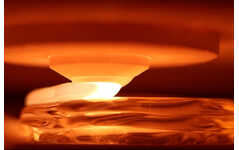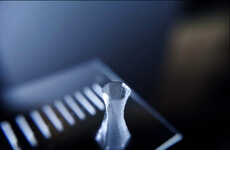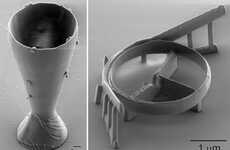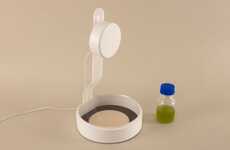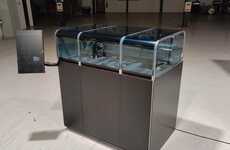
The MIT Lincoln Laboratory Created a New Glass Printing Process
Colin Smith — April 14, 2023 — Business
References: ll.mit.edu
Researchers at MIT Lincoln Laboratory have developed a new 3D-printing technique that can create complex glass structures without heating them to high temperatures. The technique uses a special ink made of water glass and particle components that can be extruded in a filament form and printed layer by layer.
After printing, the glass structure is submerged in a mineral oil bath to evaporate the water and harden the glass. The technique can enable glass to be integrated with temperature-sensitive microelectronics, such as silicon-based devices because it does not require heating above 250°C.
The technique can also produce glass with unique optical, electrical, and chemical properties by embedding nanoparticles or other additives in the ink. The Lincoln Laboratory is currently patent-pending on this technology, as it is a revolutionary breakthrough in 3D printing for complex glass structures.
Image Credit: Nicole Fandel
After printing, the glass structure is submerged in a mineral oil bath to evaporate the water and harden the glass. The technique can enable glass to be integrated with temperature-sensitive microelectronics, such as silicon-based devices because it does not require heating above 250°C.
The technique can also produce glass with unique optical, electrical, and chemical properties by embedding nanoparticles or other additives in the ink. The Lincoln Laboratory is currently patent-pending on this technology, as it is a revolutionary breakthrough in 3D printing for complex glass structures.
Image Credit: Nicole Fandel
Trend Themes
1. Low-temperature 3D Printing - This trend offers an opportunity for companies to invest in research and development of new low-temperature materials that can be used for 3D printing.
2. Additive Manufacturing for Glass Products - This trend presents an opportunity for additive manufacturing companies to explore the development of glass-based products and to discover ways to create complex shapes on par with traditionally-manufactured glass products.
3. Nano-additives for Advanced Glass Properties - This trend provides an opportunity for businesses to explore using nano-additives to create unique and advanced optical, electrical, and chemical properties in glass products.
Industry Implications
1. Microelectronics Industry - This industry can benefit from low-temperature 3D printing technology, as it will allow for complex glass structures to be integrated into temperature-sensitive microelectronics.
2. Architecture and Construction Industry - This industry can benefit from the ability to 3D-print complex glass structures, allowing for increased design flexibility and unique shapes in architectural and construction projects.
3. Glass Manufacturing Industry - This industry can explore using additive manufacturing techniques to create new glass products with unique shapes and properties, and to optimize their manufacturing process to improve efficiency.
5.3
Score
Popularity
Activity
Freshness


